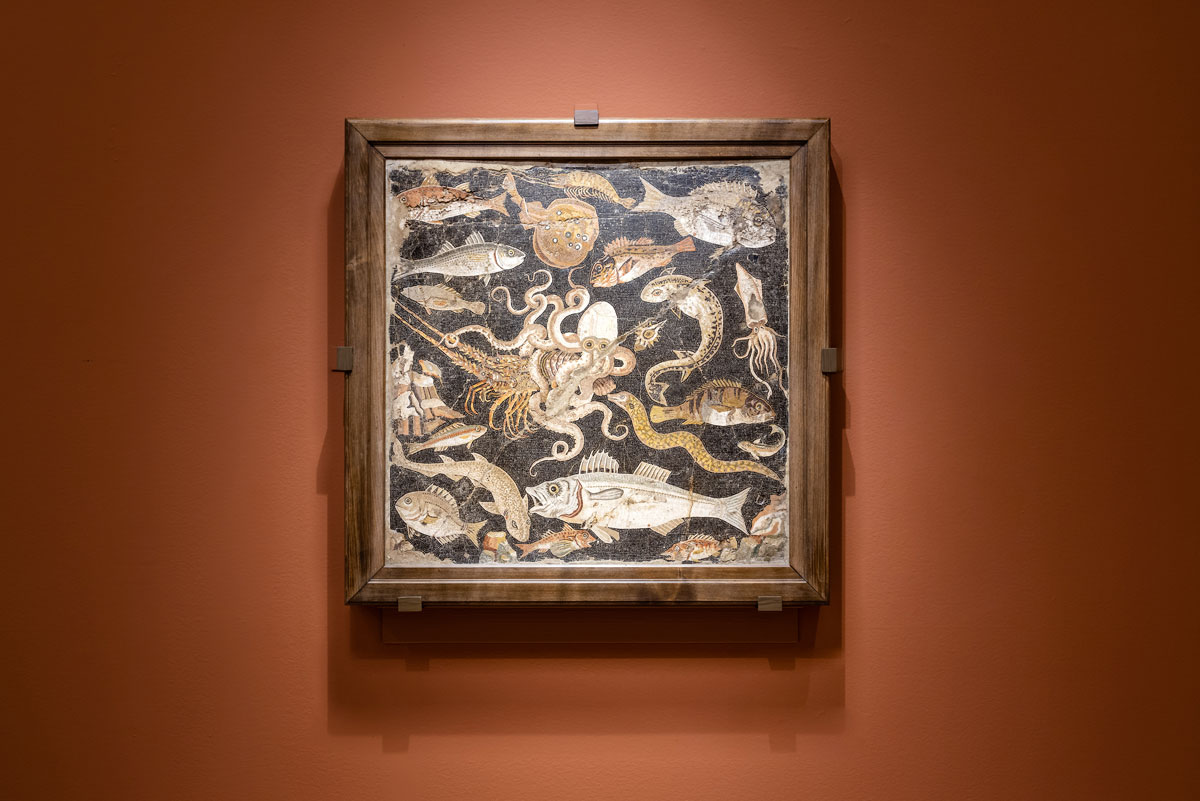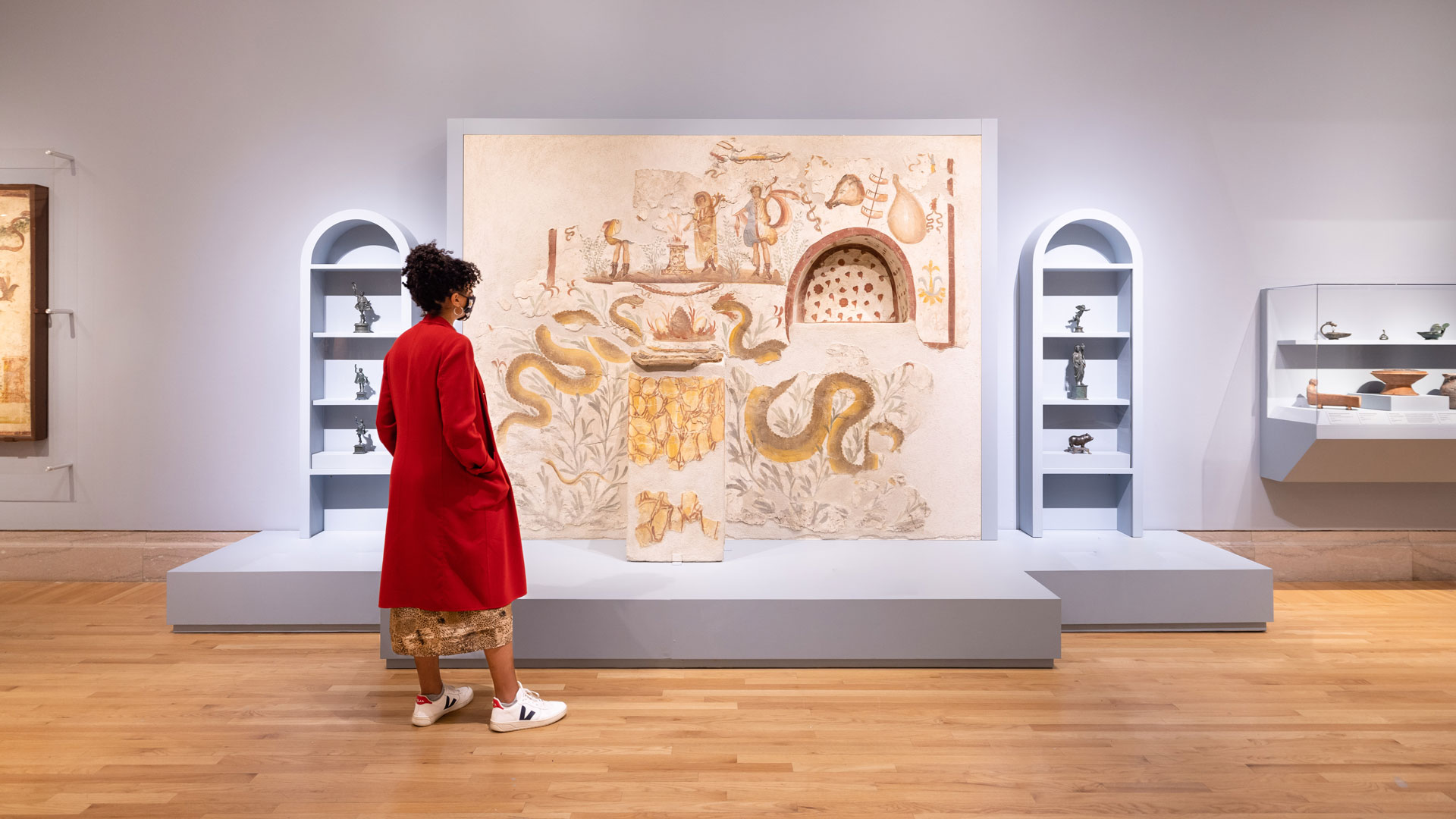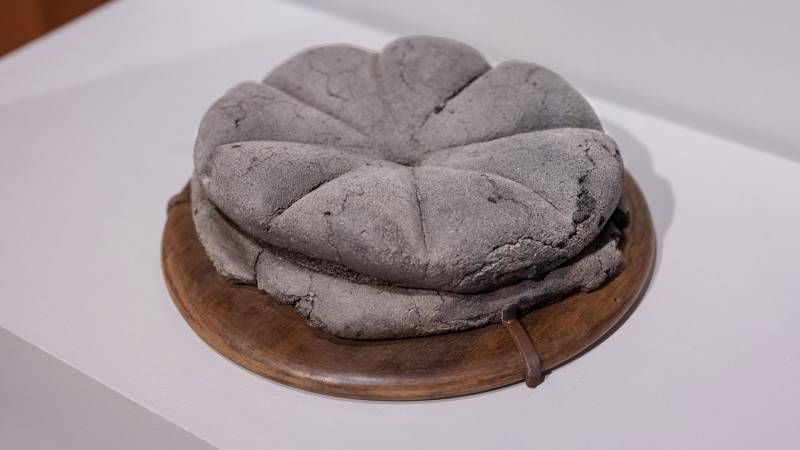Thank goodness the food items in Last Supper in Pompeii: From the Table to the Grave were already well-preserved. The exhibition had originally been scheduled to open at the Legion of Honor in April 2020, and then, well, we all know how that story goes. One year later, the museum finally reopened its doors, with a sumptuous spread rooted in the everyday life and eating habits of the ancient city of Pompeii, a story told in pots, frescoes, silverware, Bacchus statues and, yes, a carbonized loaf of bread.
On view through Aug. 29, Last Supper displays many objects that rarely—if ever—leave Italy.

While much about life was different in A.D. 79 Pompeii, when the city was frozen in time by Mount Vesuvius’ eruption of poisonous gasses and suffocating ash, much is familiar: culinary tools, domestic rituals, street vendors, modes of relaxation at home (a.k.a. wine). It’s astonishing to see just how much survived from Pompeii over the past two millennia, especially in the fine detailing of metalwork, delicate glass vessels and truly stunning mosaics.
Though as much as Last Supper presents a sense of bustling “normalcy,” there are some aspects of ancient Roman life that cannot go unremarked. A fermented fish sauce called garum was apparently all the rage, so much so that the condiment was even added to wine. Jars pierced with air holes were used to rear both snails and dormice for eating (separately, of course). And those producing most of the meals for the city’s wealthy—in hot and smelly kitchens—were enslaved.

An appreciation of the beauty and craftsmanship of objects in the exhibition is tempered by the knowledge that these items come from a city where life halted suddenly and violently. Viewed in the context of the ongoing coronavirus pandemic, Last Supper in Pompeii is a reminder of just how fragile our lives—and our lives’ pleasures—truly are.


